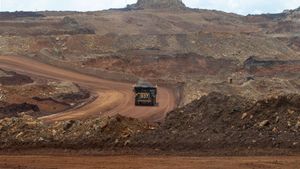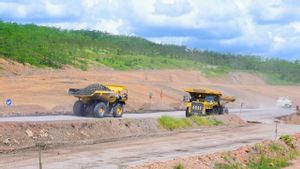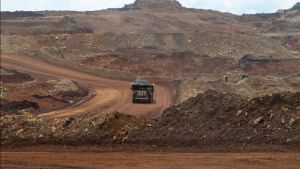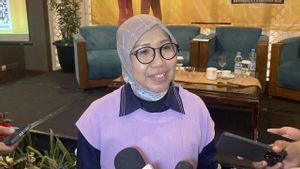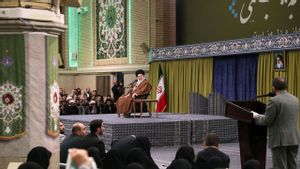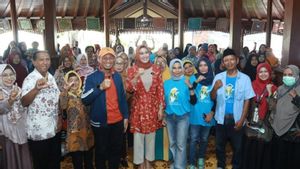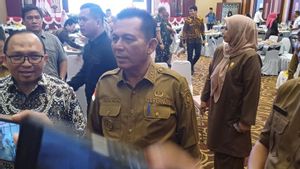BERAU - PT Berau Coal has a Mapan Flower program or Future Development Area which is an integrated post-mining program of PT Berau Coal.
Mine Closure Department Head of PT Berau Coal, Doddy Herika said, after mining activities are carried out in one particular area, reclamation and revegation must be carried out by the company as part of the mining closure process, where the former mining land must be returned according to the designation.
Doddy said that mining land in addition to replanting can also be used as other designations such as plantations, livestock, and even integrated natural tourism areas by combining elements of nature, education and tourism (ecoedutourism) that can be enjoyed by the community.
"PT Berau Coal implements an integrated mining closure program known as Kembang Mapan, which aims to make post-mining land beneficial for the environment and has a positive impact on the continuity of socio-economic activities of the people who are independent and sustainable," said Doddy when met at the Binungan Golf Course, Berau, East Kalimantan, Wednesday, December 6.
Doddy detailed, one example of the Mapan Kembang Program carried out, namely on the reclamation land of Pits H1, H3, and H3N in the Block 5-6 Site Binungan area. Mining activities in this area have been carried out since 1995 and completed in 2005. The Open Pit Mining method run by PT Berau Coal in this area, changed the morphology so that it formed land and waters, with a disposal area of 663.98 hectares, and 46 hectares of vocals.
"The land aspect is managed through revegation, while the water aspect is managed by actively managing so that the water managed meets environmental quality standards," he said.
Doddy said that the Mapan Kembang program in Block 5-6 Site Binungan was divided into two aspects, including the mainland aspect and the water aspect.
Mainland Aspects
mainland aspects, said Doddy, consist of various areas that also have each program, including:
1. Conservation Area
Doddy explained that the conservation area is an area of protection and preservation of biological natural resources and its ecosystem which is managed from post-mining reclamation land and secondary lowland tropical forest covering an area of 361.43 hectares.
"This area functions to improve the quality of runoff water, protect water continuity, and protect flora and fauna," said Doddy.
2. Binungan Little Farm and Silvopasture
He explained that this program is a model for managing mining reclamation through cattle cultivation using an intensive and extensive method with a silvopastura pattern.
"Currently, there are 264 cows with types, Brahman Cross, Donggala, Bali, Simmental, Limousin and Angus. This cattle farm is the main focus in improving the quality of the mainland aspect of reclamation, namely in terms of utilizing cow waste as a manure," explained Doddy.
3. Binungan Goat Farm
This program is a goat cultivation with a braeding concept by applying an intensive livestock system. The current population is 66 goats with Etawa and Local types.
"This goat cultivation activity is able to produce manure which we also use directly in the plantation maintenance process," said Doddy.
4. Horticulture Estate Banana
Other activities that are also found in established Kembang are banana plantations with a productive banana plantation area of 4 hectares with banana plants that can produce 2,600 combs per year, and 2,100 combs per year.
"The continuation of this program is also carried out diversification of banana flour products, which can produce banana flour. In its management it is carried out in collaboration with the community. This product has also received a distribution permit for the Domestic Industry (PIRT)," he said.
5. Binungan Golf (Recreation Area)
Finally, explained Doddy, Berau Coal also made a golf course on former mining land and was used as a sports facility in the form of a golf course.
This field has a land area of about 55.38 hectares and is the first golf course to be above the former mine land and has 18 holes along with supporting facilities such as green, tough, bunker, fairway and housing.
"This golf course has been proposed several times to become an official sports venue such as PON and PORPROV but not yet because of the location of the field which is still 1 hour from residential areas," said Doddy.
However, Doddy said, the Provincial Government had provided assistance in the form of procuring road and bridge access from the nearest village so that it could cut the distance from the previous 1 hour to only 45 minutes.
Water Aspects
For water access, Berau Coal has a Binungan Fisheries Project program which is a fishery cultivation activity in the context of increasing post-mining lake productivity (void).
Mine Closure Specialist, Yan Lepong explained, Binungan Fishieris Project itself has 5 peddering pools, 11 boarding ponds, 10 biofloking ponds, floating net cages with a total production of Nila Gesit and Gift 500,000 fish seeds per year, the majority of which are intended for the spread to voids and inundation as bioindicators and re-stocking of 450,000 freshwater fish per year.
SEE ALSO:
"The Fisheries Project cultivation method is used as a pilot protection by the Berau Regency Fisheries Service," Yan said when met at the freshwater nursery location in Binungan.
Yan said the reason his party chose freshwater fish cultivation to be developed in the former mining land was because fish are one of the indicators who determine that the water in the former mining pond has met quality standards.
At the beginning of its establishment, Yan said that Berau Coal collaborated with third parties from Mulawarman University to monitor the growth rate of fish in the voids around the mine.
"Currently we only produce finished seeds for fish that are raised, no. Because indeed we focus on spreading seeds and for 2023 it happens that our target is 700 thousand which must be distributed to all sites," concluded Yan Lepong.
The English, Chinese, Japanese, Arabic, and French versions are automatically generated by the AI. So there may still be inaccuracies in translating, please always see Indonesian as our main language. (system supported by DigitalSiber.id)



